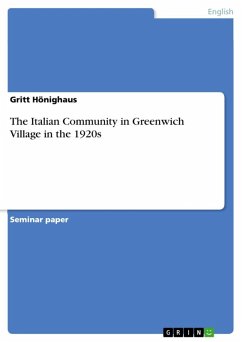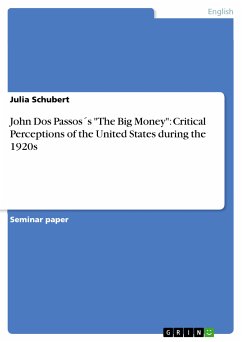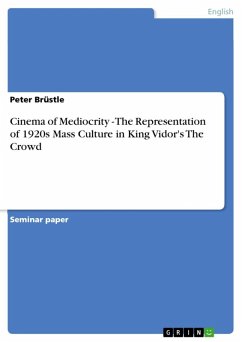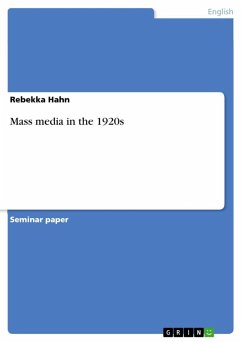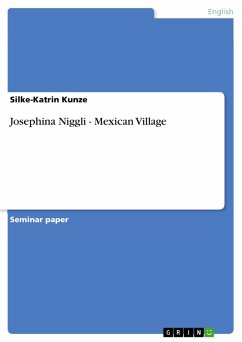Seminar paper from the year 2000 in the subject American Studies - Culture and Applied Geography, grade: 1,7 (A-), Humboldt-University of Berlin (American Studies), course: Hauptseminar: Imagining the Cultural Metropolis: Urbanism and Public Culture in New York City and Berlin in the 1920s, language: English, abstract: Introduction 1.1. The 1920s in the United States The 1920s - also called the Roaring Twenties - proved to be a decade of triumphant capitalism in the United States. The American economy which was characterized by recession after World War I began to recover. By 1922 it was growing rapidly and prospering. New industries like the car industry stimulated other industries like rubber, oil and steel production and the construction of new highways. Besides, the mass production of cars brought hundreds of thousands of new jobs. Technological innovations like the assembly line increased the productivity by more than 40 per cent. The proportion of women working outside home went up, too. There was a need for secretaries, typists and filing clerks, which were new women's jobs. Real wages increased dramatically. This rapid process of modernization took place without governmental intervention. American politics went back to a tradition of the late 19th century, namely the faith in a strong economy with a weak state. Warren G. Harding's presidency which was marked by bribery scandals was followed by President Calvin Coolidge whose motto was "The business of America is business." The 1920s were a bad time for organized labor. Union membership went down because the managements of the factories discouraged its growth by intimidation and brutal violence. In summary one can say it was a time of severe hardship and repression for working-class men and women but a time of prosperity for the middle and upper classes. [...]
Dieser Download kann aus rechtlichen Gründen nur mit Rechnungsadresse in A, B, BG, CY, CZ, D, DK, EW, E, FIN, F, GR, HR, H, IRL, I, LT, L, LR, M, NL, PL, P, R, S, SLO, SK ausgeliefert werden.

